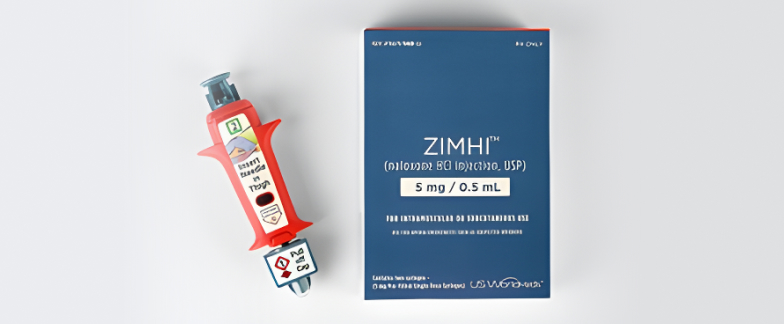Naloxone (Narcan) is a medication designed to rapidly reverse opioid overdose. Narcan is administered when a patient is displaying symptoms of an overdose, and is only a temporary treatment that does not last long. Narcan allows for the provisional treatment of an overdose that should be promptly followed by medical care. Being an opioid antagonist, Narcan is a life-saving medication that is relied on in times of emergency. As it has become more widely accessible, states that have enacted laws to increase access to this medication have seen a 9-11% reduction in opioid-related deaths. Sometimes crucial to the recovery process, we’re digging into what Narcan is and how it is saving thousands of lives every year.
What is Narcan?
Narcan is a life-saving medication that can reverse and overdose from opioids when given in time. There are two forms of Narcan that anyone can use without medical training or authorization. One is a prefilled nasal spray and the other is an injectable.

Why is Narcan Important?
Narcan is saving lives, daily. With nearly 92,000 individuals in the U.S. dying from drug-involved overdose in 2020, life-saving measures are necessary. Narcan can be administered to anyone experiencing symptoms of an opioid overdose, and has no negative impact when administered to an individual who has not used opioids. Narcan is only an effective antagonist towards opioids, other substances, such as stimulants and benzodiazepines are not impacted by Narcan presence.
Who Can Carry and Administer Narcan?
Anyone can carry and administer Narcan. If you or someone you know are at risk of experiencing opioid overdose you should carry Narcan. Research has found that in nearly 40% of overdose deaths, someone else has been present. Without a doubt, proper access to Narcan has the potential to impact almost half of all opioid overdose deaths.
If you decide to carry Narcan, look of for the following signs of opioid overdose:
- The person does not wake or respond to touch or voice
- Their breathing is not normal, very slow, or has stopped
- The have pin-point sized pupils
- Their lips and nose may be bluish is color
How Does Narcan Work?
Narcan quickly reverses an opioid overdose by blocking the effects of opioids in the brain. It can restore normal breathing patterns within 2 to 3 minutes for a person whose breath has slowed, or even stopped, as a result of an opioid overdose. More than one dose of Narcan may be required when stronger opioids, like fentanyl, are involved. Once you’ve administered Narcan, call 911 if you haven’t already and stay with the individual until medical assistance arrives.
Everyone Should Carry Narcan
To reduce the greatest amount of harm, everyone should aim to carry Narcan if they are able to. We see a range of people utilizing this life-saving medication, from medical personnel to the average bystander. Because there is minimal training required outside of instructions for administering. Narcan distribution locations are available as well as obtaining it from the local pharmacy. Finally, after over 40 years of existence, Narcan is widely available and free to obtain. The more people who are carrying Narcan, the greater chance of saving a life from an opioid overdose. Find out more about where you can obtain free Narcan to carry on you below!
Find Narcan Now!
You can visit a local pharmacy and obtain Narcan now, whether or not you have insurance. Or if you’d like to receive training or pick up your Narcan from a distribution center, visit the Steve Rummler’s Narcan program here to find locations in Minnesota.
Sources:
American Academy of Family Physicians. “Help save lives: Co-prescribe Narcan to patients at risk of overdose.” American Medical Association, 2017. https://www.aafp.org/dam/AAFP/documents/patient_care/pain_management/co-branded-Narcan.pdf.
Accessed 17 January 2023.
CDC. “Lifesaving Narcan.” Centers for Disease Control and Prevention, 2022. https://www.cdc.gov/stopoverdose/Narcan/index.html.
Accessed 17 January 2023.
NIH. “Overdose Death Rates.” National Institute on Drug Abuse, 2022. https://nida.nih.gov/research-topics/trends-statistics/overdose-death-rates.
Accessed 17 January 2023.
SAMHSA. “Narcan.” Substance Abuse and Mental Health Services Administration, 2022. https://www.samhsa.gov/medication-assisted-treatment/medications-counseling-related-conditions/Narcan.
Accessed 17 January 2023.





